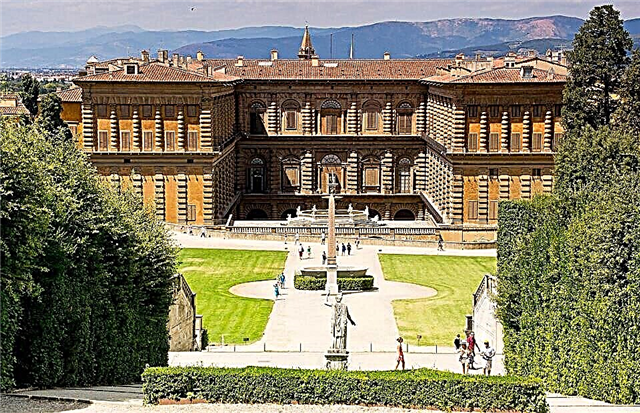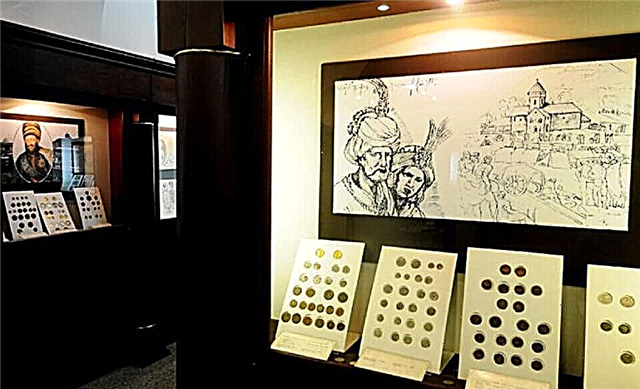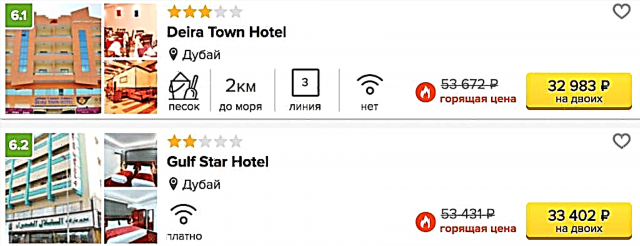Spain is the birthplace of one of the most talented artists of all time. We are talking about Pablo Picasso, whose extraordinary work is known to every art lover. The Picasso Museum in Barcelona is the key to understanding the great master's painting. The works presented in the collection introduce gallery guests to the deep and unshakable relationship between the genius and the capital of Catalonia, which began at an early age and continued until Pablo's death.
History

In 1917, Picasso finished his first large-scale painting "Harlequin" and presented it to Barcelona, the city that influenced the life and work of the author. This work marked the beginning of the expositions of the future museum, the idea of creating which belonged to Jaime Sebartes, a close friend and secretary of the eccentric artist. The patron wanted to open a gallery in the homeland of the genius author - in Malaga. However, this was opposed by Picasso, who considered the southern capital of Spain to be the place where his creative career began.
Sebartes' personal collection of 574 works was exhibited within the walls of the gallery, which opened in March 1963. Later, connoisseurs of the creativity of the founder of Cubism supplemented its fund. Thus, Salvador Dali presented a book of illustrations to Ovid's Metamorphoses as a gift. Picasso himself did not remain indifferent to the exhibitions. In 1970, two years after Sebartes' death, he donated school books, early sketches and over 900 of his famous works, including the Las Meninas series.
In 1982, the master's widow, Jacqueline, donated a collection of 41 pieces of ceramics to the museum. A generous gift in the form of 117 prints was made by the Parisian art gallery of Louise Leiris. The last reconstruction of the exhibition premises was completed in 2003. Six years later, the Picasso Museum was recognized as one of the forty most famous and most visited art galleries in the world.
A little about the artist
On October 25, 1881, a boy was born into the family of art critic and drawing teacher from Spanish Malaga, Jose Ruiz, who was destined to become the founder of avant-garde art. The first word of the future painter is "pencil"; the kid learned to hold the same object in his hands earlier than others. The talent manifested itself very early. Pablo painted the painting "Picador" in oil at the age of nine, and six years later, the academic canvas "First Communion" came out from under his brush.

At the age of thirteen, the future Catalan virtuoso of painting passed the entrance exams to the Barcelona School of Fine Arts without any problems, from where, three years later, he transferred to the Royal Academy of Arts of Madrid. After completing his studies, in 1904 he moved to Paris. From this moment on, Picasso's creative destiny is divided into several stages:
- Melancholic "blue period" - the beginning of the path to high art, "faceting" the skill of the painter.
- "Pink period", which was characterized by cheerful motives and light colors.
- Cubism. The simplest geometric shapes and hypertrophied volumes were used to create canvases resembling rebuses.
- Neoclassicism was marked by the emergence of bright colors and clear recognizable images.
- Surrealism became a reflection of the Great Depression that swept Europe in the 1920s. The canvases were a mixture of surreal images, hallucinations and figures torn to pieces.
All his life, the artist was surrounded by beautiful women, but he was married twice. Olga Khokhlova, a dancer of the Dyagel Ballet Company, became her first wife in 1918. The second time the painter tied the knot in 1961. His chosen one, 27-year-old Jacqueline Rock, remained with Pablo until his death. The heart of the extravagant genius stopped on April 8, 1973. According to the assessment of the New York Museum of Contemporary Art, the Catalan master of the brush left behind more than 20 thousand works.
Museum buildings
The museum is located in the heart of the El Born district bordering the Gothic Quarter, on Carrer Montcada, one of the oldest streets in Barcelona, dating back to the 12th century. Initially, the expositions occupied the premises of the Berenguer d'Aguilar palace. New exhibits required an expansion of the area, and the nearby Gothic mansions joined the Palau aguilar. Decorated with cozy patios, open staircases and arches, they are attractions in themselves.
Palace of Berenguer d'Aguilar
The mansion, the construction of which dates back to the 13th century, became the first and main building of the gallery. The building, which belonged at different times to the wealthy residents of the capital of Catalonia, was reconstructed more than once in the period from the 15th to the 18th centuries, as a result of which features of the Renaissance and Gothic architectural styles can be traced in its appearance.
In the middle of the last century, the city council of Barcelona bought the house from the heirs of Berenguer Aguilar and carried out large-scale restorations in it, during which a fresco from the beginning of the 13th century was found on one of the walls.
Palace of Baron Castellet
Until the 18th century, each owner, having received a magnificent mansion of the 13th century, considered it his duty to introduce something new into its architecture. Thanks to this, today tourists are greeted by an elegant structure, a feature of which is the living room decorating the first floor, decorated with elements of marble in the neoclassical style. The structure has been owned by the state since the middle of the 20th century.
Mecca Palace

Information about the date of construction of Palau Meca has not been preserved in the archives. The mansion is believed to have been built in the 14th century and belonged to City Councilor James Knight. In the 16th century, the house was bought by the Mecca family. The new owners partially rebuilt the palace, adding elements of the Baroque style, the reflection of which can be seen in the wrought iron staircases and the decoration of the balustrades of the balconies.
Finestres Palace
The mansion, erected in the 13th century on the remains of a Roman necropolis, welcomes its guests with baroque arches. After passing through them, visitors enter the central part of the palace - the main entrance. Like previous buildings, Palau Finestres has been rebuilt many times, miraculously preserving the decoration of the medieval courtyard. Temporary exhibitions are now held in the spacious halls.
Maury's house
The palace was published in the 18th century, although its foundation was laid in the era of Ancient Rome. The facade is decorated with a wooden lattice - the only one that has survived in Barcelona. The name of the building was given by the Mauri confectionery, located within the walls of an old mansion in the 40s of the last century. Casa Mauri joined the group of "museum houses" in 1999.
Collection

The Museum on rue Montcada has the largest collection of works by Picasso in Spain, numbering 4,249 exhibits, including paintings, pencil sketches, sketches, lithographs, ceramics, prints, etchings, sculptures, archival documents and photographs of the genius. You will need at least three hours to walk through all the halls.
In order to help visitors follow the process of the artist's formation, the emergence and development of his unique style, the staff placed the exhibits in a strictly chronological order. First, sightseers get acquainted with the samples of the young fourteen-year-old master's pen and his first creations, then masterpieces of later periods are presented to their attention. The most famous paintings in the museum are:
- First communion
- Harlequin
- Science and Mercy
- The figure in the chair
- Woman in shawls
- Crazy
- Meninas

In total, the halls display 15 expositions containing works created in the period from 1895 to 1957. Most of the canvases belong to the early stage of the painter's work. With annual temporary exhibitions dedicated to themes related to works by Picasso and other famous authors, a visit to the gallery never gets boring.
The highlight of the collection - "Meninas"

The pride of the museum is the "Meninas" series.While working on it, Picasso paid tribute to the artist Diego Velazquez, who in 1656 created a painting depicting the daughter of the King of Spain, the Infanta Margarita, surrounded by servants, a lady-in-waiting and two dwarfs. Among the characters are the royal couple and the author himself in the form of a court artist.
Pixasso's interpretation of Menin appeared in 1957, three centuries after the original was published. Having retired for four months in Cannes, the avant-garde artist wrote several variations of the great work, adding to each canvas something new, purely personal. He played with colors and shapes, breaking the plot into pieces and reassembling it from small fragments. Sometimes the author removed some of the characters and replaced them with new ones, sometimes having only a fleeting resemblance to the original characters. So, in one of the paintings, instead of the king and queen, we see the creator's wife, Jacqueline.
The collection dedicated to Velazquez's masterpiece is housed in 12-15 halls of the gallery. It includes 44 interpretations of "Menin", several landscapes and nine bright optimistic compositions with doves, created in the style of a child's drawing.
Opening hours and ticket prices
The gallery is open from Tuesday to Sunday from 9:00 to 19:00, on Thursday from 9:00 to 21:30. On December 24 and 31, the museum closes at 17:00. Days off: Monday (weekly), 01.01, 01.05, 24.06 and 25.12.
The possibility of free entry (the number of visitors is limited) is provided:
- monthly on the first Sunday from 9:00 to 19:00
- on Thursdays from 6:00 to 9:30
- on open days: 18.05 and 24.09
Regular rates:
- combined ticket (main collection + temporary exhibitions): € 12
- temporary exhibitions only: € 6.50
Discount admission tickets (collection € 7 and temporary exhibitions € 4.50) are eligible for young people between 18 and 25 and senior citizens over 65. A multimedia audio guide containing information about the exhibits of the main collection in Russian costs 5 euros.
Children under 17 years of age (accompanied by adults), accredited journalists, members of the International Council of Museums and professional guides pass free of charge, subject to the provision of an appropriate certificate. For art lovers, there is a great offer: by purchasing an Articket BCN card for 30 euros, you get free admission to the six largest museums in Barcelona.
There are always long lines at the box office of the gallery, try to come in advance or buy tickets online on the official website www.museupicasso.bcn.cat.
Where is it located and how to get there

The gallery is located in the central part of the southern capital of Spain at the address: Carrer Montcada 15-23, 08003 Barcelona. You can get to it as follows:
- By metro: Line 1 (red) to Arc de Triomf and line 4 (yellow) to Jaume I.
- By bus:
- 120, 45, V15: to Via Laietana
- 39, 51, H14: to Passeig Picasso
- H14, 51, Hop On Hop Off Red Tourist Route: to Pla de Palau
- 120: to Princesa
- By car: GPS coordinates: 385094 ° N, 2.180794 ° E. The nearest car parks are at Avinguda Cambó, Carrer Princesa and Via Laietana.
Useful information for visitors
- Leave your photo and video cameras in the hotel room - shooting in the gallery is prohibited.
- Do not take with you large bags and backpacks with dimensions exceeding 30x30 cm, otherwise they will have to be dropped off in the storage room.
- The museum has a shop where you can buy souvenirs, themed CDs and books in different languages.
- After visiting the gallery, stroll through the gloomy well-streets of the Gothic Quarter, the medieval heart of the Catalan capital.
Important! Many works of the genius Spaniard can cause confusion among novices in art. If you are unfamiliar with the works of the avant-garde artist, you should read in advance about his life, stages of creativity and look through albums with reproductions of paintings.











